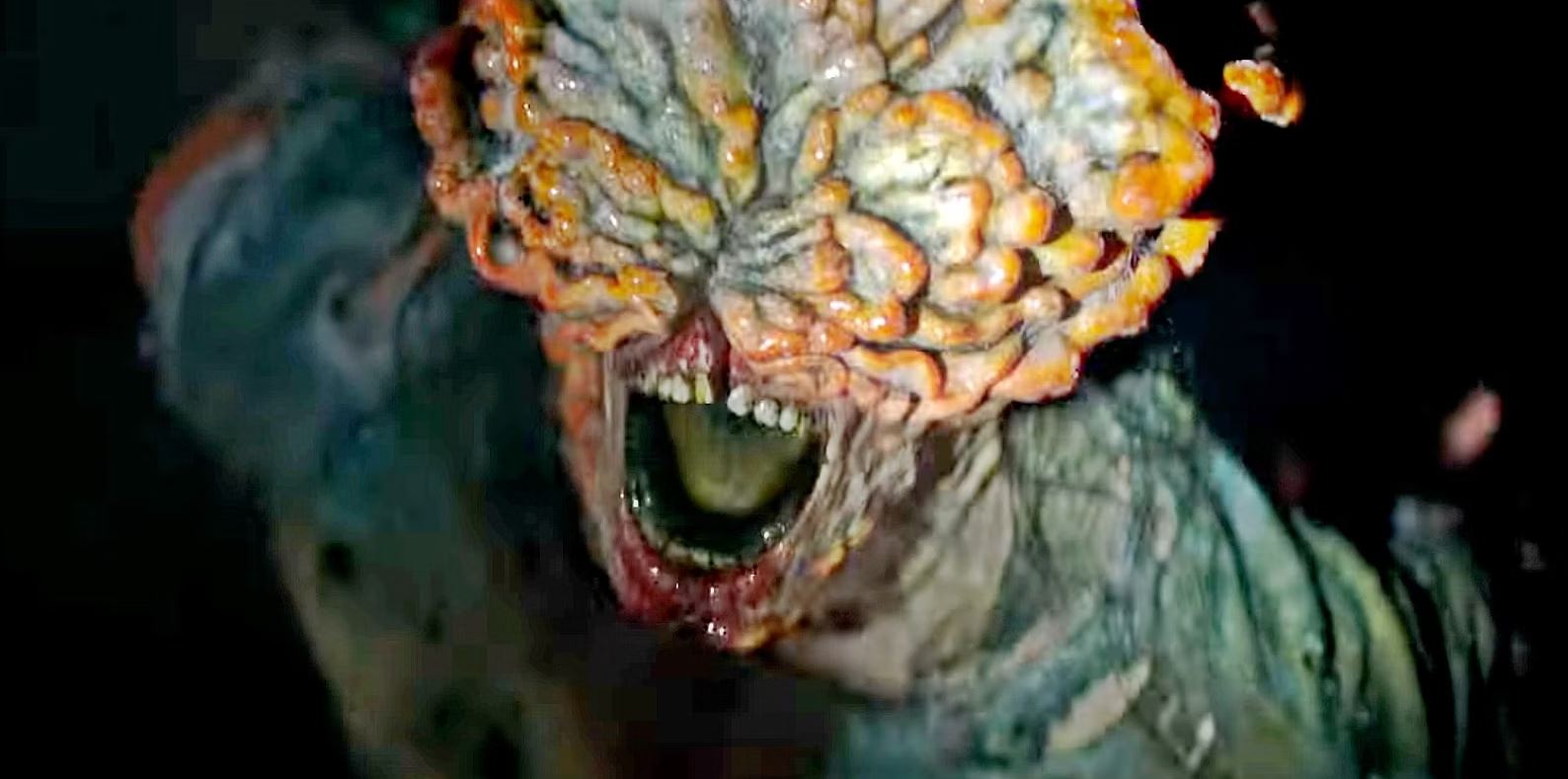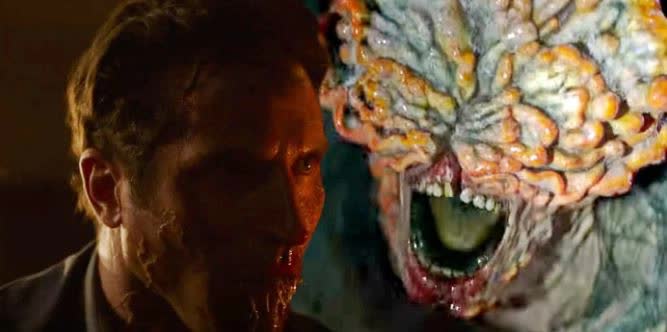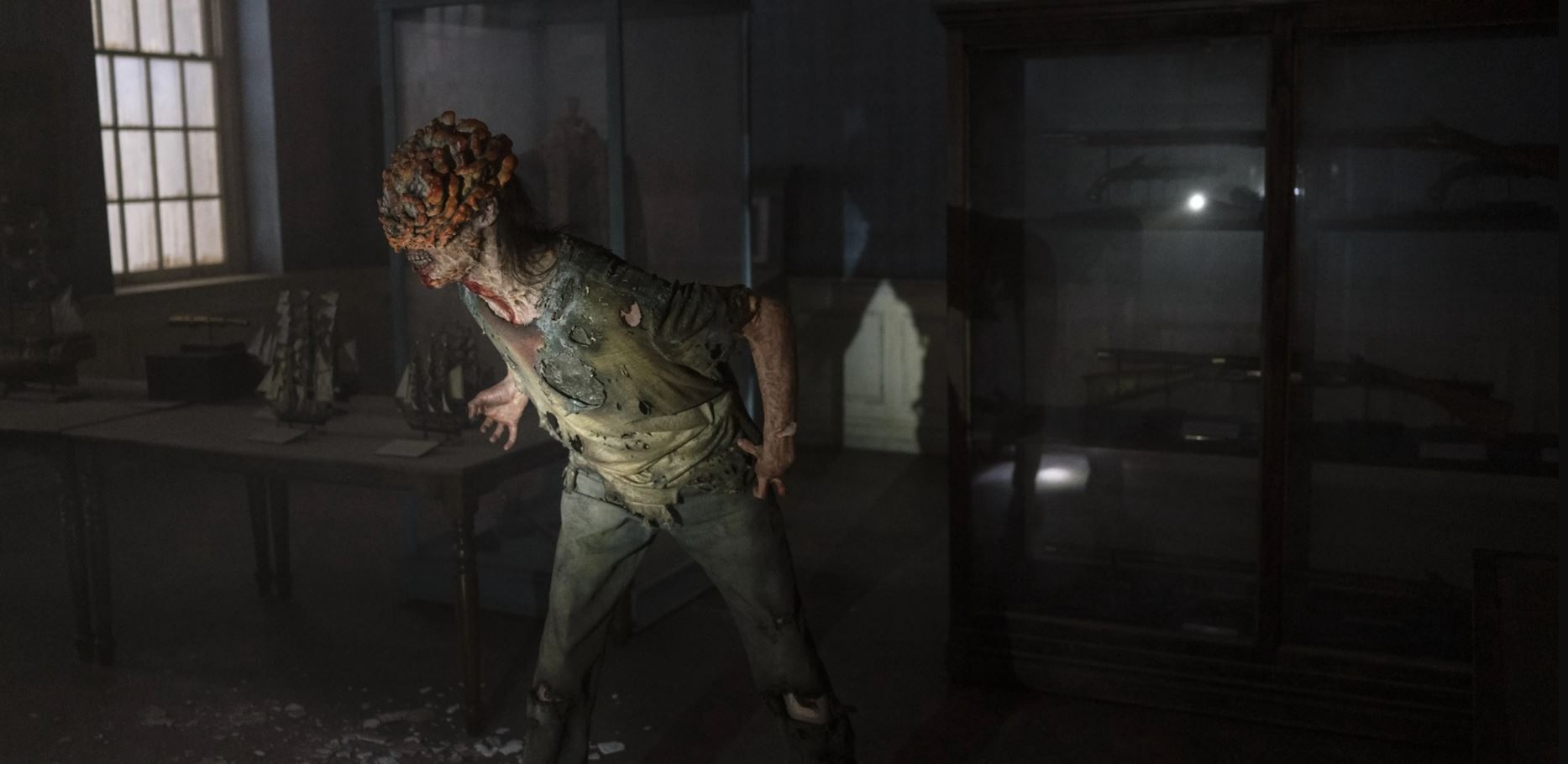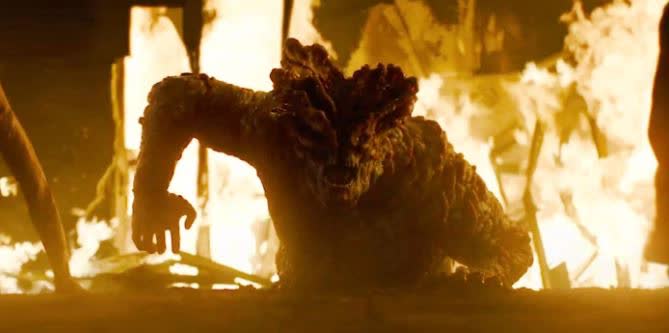Episode 2 of the series The Last Of Us aired on January 23, introducing a new type of zombie that is incredibly dangerous and more daunting than many others. This is the Clicker, a creature that has lost its sight but has developed a unique echolocation ability, allowing it to navigate swiftly and accurately locate humans primarily through the faintest sounds.
What is a Clicker?

Essentially, Clickers are a stage in the infection process of the Cordyceps fungus in The Last Of Us. Typically, individuals who contract the infection are called Runners. At this stage, they do not have many visible changes but have lost their consciousness and bodily control, turning into a gruesome killing machine. The term “Runner” refers to the characteristic behavior of this type of zombie.
Clickers are considered the third stage of infection and can be viewed as an “evolution” of Runners, as these beings have been infected with Cordyceps for at least one year. During this time, the fungus fully envelops the host body, particularly the head, causing them to lose their sight and rely on sound to locate their prey. This ability is known as echolocation, which explains why Clickers frequently emit distinct clicking sounds.
Physical Appearance and Strength of Clickers

Compared to the earlier infection stages, Runners and Stalkers, Clickers no longer resemble an ordinary human, with a grotesque and distorted face and limbs due to the fungus developing externally from their bodies. At this point, the clothing of the host has become tattered or completely destroyed, leaving only remnants that signify the initial stages of the infection process.
As mentioned, Clickers have lost their sight but have retained a unique ability to respond quickly to sound and can utilize echolocation to determine the location of their surroundings. In gaming lore, Clickers can also revert to a dormant state like Runners, meaning they are inactive in their territory and do not attack when they are not threatened.
However, over time, Clickers become increasingly aggressive, posing a greater danger than Runners and Stalkers. At this point, the host no longer has the capacity to control their actions due to the influence of Cordyceps. Moreover, their fungal networks help them move faster and more stealthily, making them formidable opponents capable of launching powerful attacks, especially when they feel threatened. This danger was prominently depicted in the latest episode of The Last Of Us, where Joel had to struggle to survive against a Clicker.

Not only are they enhanced in terms of physical attributes, but Clickers also possess a remarkable level of intelligence. They do not wander far from their established territory once they identify the presence of a human, continuously scouting every corner using their echolocation abilities. However, this system remains relatively primitive compared to other living beings like dogs, and Clickers cannot sense a human when they are too far from their vicinity.
In Episode 2 of The Last Of Us, when attacked, Clickers will instantly switch into “hunting mode,” relentlessly swinging their arms to attack and continually lunging forward, trying to overpower their target. Even in moments of stillness, this type of zombie cannot be underestimated, especially when Traps are set in their vicinity.
Understanding the Echolocation Ability of Clickers

As previously mentioned, the ability to use echolocation is the most distinctive feature of Clickers, and it is also the reason why they are named as such. The distinct clicking sounds they produce help them navigate their environment and pinpoint the location of their prey.
Echolocation is a skill utilized by various animals in nature. In essence, they create sound waves that bounce off objects, allowing them to determine distances, sizes, and most importantly, the positions of these objects.
The ability to use echolocation allows this type of zombie to compensate for their lost sight, even though they are still significantly handicapped. In the latest episode of The Last Of Us, we see that even when they are very close to Joel, Tess, and Ellie, Clickers still struggle to define their exact locations until Ellie accidentally bumps into them, allowing them to continue their hunting process.
Besides the ability to locate prey, the ability to use echolocation also enables Clickers to move and navigate in their surroundings. Without this capability, they would wander aimlessly, easily colliding with obstacles on their path or even getting stuck in corners.
What Other Types of Zombies Will The Last Of Us Introduce?

As mentioned, there are numerous stages in the infection process of the Cordyceps fungus and are defined according to their respective timeframes. In this context, Runners are those newly infected individuals. After about 2 weeks to 1 year, they will “evolve” into Stalkers – beings that frequently hide and ambush humans. After one year, the infected individuals will officially become Clickers as analyzed above.
However, Clickers are not the final stage of the infection process. After about a decade, when the fungal spores have fully developed outside the host body, these individuals will transform into Bloaters. At this point, they will still be blind but will have become much more formidable.
With their external fungal layers, Bloaters become super-strong compared to typical infected beings. When needed, they can shed their fungal layers and throw them like a bomb, aiming to overwhelm their targets. However, their primary weakness lies in their mobility: they can only move very slowly.
In Episode 2 of The Last Of Us, Ellie had already “hinted” at Bloaters when mentioning “those super-infected can explode and take down others.” Interestingly enough, in the game series, Bloaters first appeared at the Bill’s area where Joel and Ellie were heading in the HBO adaptation. Therefore, if nothing changes, we may “encounter” this terrifying type of zombie in Episode 3 of The Last Of Us, airing on January 30.
Source: HBO, ScreenRant





















